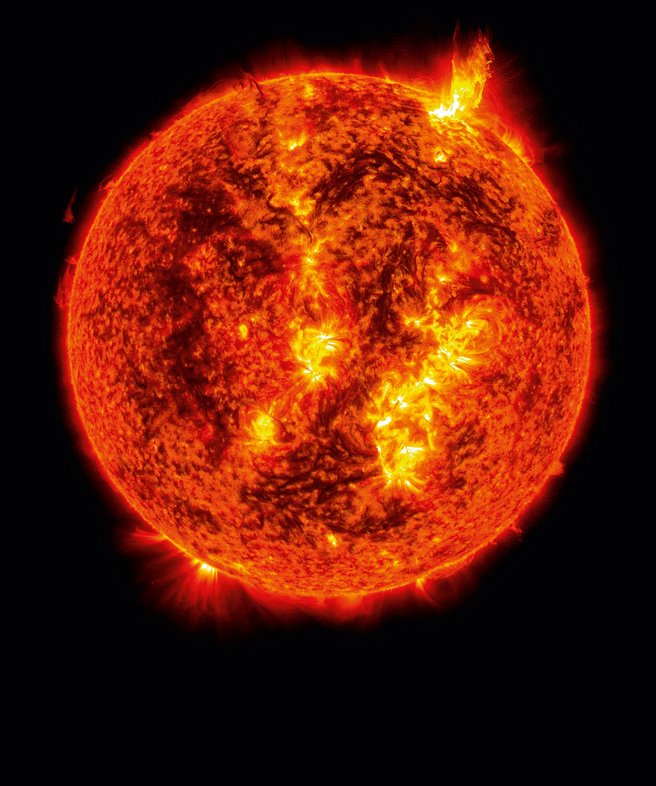DOES IT SNOW IN SPACE?

It does storm and rain, at least. Not with water, however, but rather with particles of matter that are hurled from the sun. The European Space Agency (ESA) monitors these types of weather escapades in space very closely in order to prevent damage. During a solar storm, the sun sends charged particles towards Earth that can destroy sensitive parts within satellites.
Yet sometimes we can also feel the effects of space weather on Earth: major solar flares can cause disruptions and damage to electronic equipment—for instance the on-board electronics of airplanes. Electromagnetic radiation and magnetic storms can also disrupt computer microchip production and cause high-voltage networks to collapse. They additionally interfere with television and cellphone transmissions, not to mention other telecommunications and navigations systems.
In 1989, Quebec, Canada, experienced a nine-hour blackout, while in 2003, a magnetic storm paralyzed satellite-based GPS services in Germany.